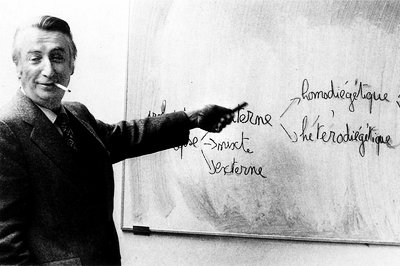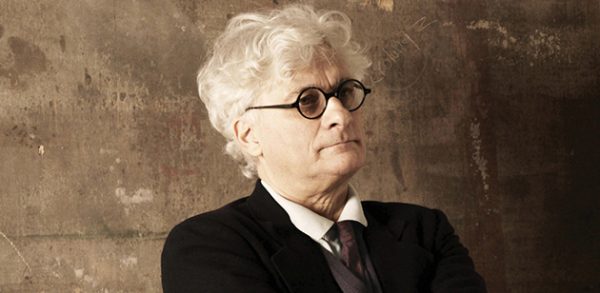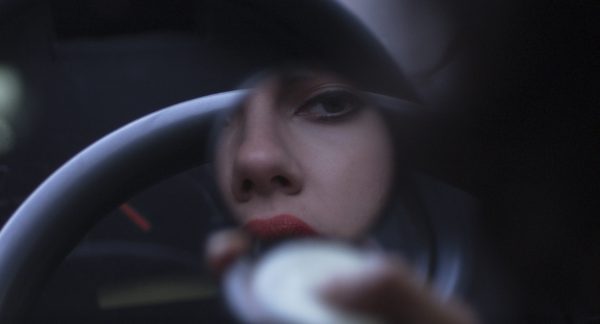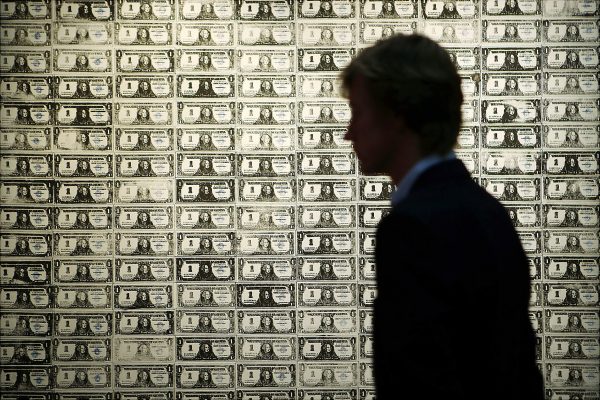Criticism has not been doing well lately. The London Review of Books, Europe’s biggest-selling literary publication, would no longer exist if it wasn’t being funded by its wealthy editor’s family trust, having run up debts of £27m in 2009. Harper’s, the oldest monthly in the United States, would have disappeared a long time ago if it had not been supported by a billionaire with journalistic ambitions, John R. MacArthur. In France, the critic’s stock has never been so low, to the extent that it has become commonplace to deplore the ‘death of criticism’ in the same way that Roland Barthes used to theorise about the ‘death of the author’. In Italy, critical writing has become exceedingly rare, meaning that the occasional book, such as Alessandro Piperno’s Proust antiebreo (Proust, Anti-Jew), is received to tremendous critical acclaim. The translation of Daniel Mendelsohn’s collection of essays drawn from the New York Review of Books also serves to underscore the current situation faced by criticism. Published as How Beautiful It Is and How Easily It Can Be Broken, translated as Bellezza e Fragilità, Mendelsohn’s anthology epitomises the difficulty of implementing a type of criticism that is based on the aesthetic notion of beauty at a time when permanent streams of information prevail. Is criticism, already fragile, threatened by the excess of information available in modern culture? And are critics now an endangered species?
We are experiencing a period of increasing interest in high-quality criticism
The answer is yes. News can now be transmitted around the world within a matter of seconds, meaning that the empire of information is no longer the sole property of the critic. Nonetheless, we are experiencing a period of increasing interest in high-quality criticism despite the relative paucity of contemporary critical writing. Since this form can no longer justify its superiority over other types of discourse, it needs to retreat into introspection and to rethink its role and function within contemporary society. As in any moment of crisis, critics have initiated a self-reinvention, a ‘retour aux sources’, following Giuseppe Verdi’s advice: ‘Let us turn back to the ancient, it will be an improvement’. This is not actually a conservative idea – on the contrary, by returning to its essential literary and personal qualities, criticism can be regenerated. A few elements attest to the renewed passion for actual criticism, such as the collections of essays published by Daniel Mendelsohn and, more recently, by George Steiner, both of which have achieved remarkable public success. In its American, Spanish and French editions, George Steiner at the New Yorker sold incredibly well, showing that readers are eager for good criticism.
Why is this? What do people want from good criticism? And what makes a critical essay relevant? Simply put, it is a matter of form and content. On the one hand, the originality of a topic and the way it is treated; on the other, the author’s stylistic ability to draw the reader in. Mendelsohn decided he wanted to be a writer after reading ‘The Cleric of Treason’, Steiner’s essay about the spy Anthony Blunt who betrayed his country to provide information to the Soviet Union. When he experienced this epiphany back in 1980, he was a freshman at Princeton University. His experience is proof of the astonishing power of critical writing at its best.
By his own admission, George Steiner is nothing more than a postino, a mailman delivering letters from a bygone cultural and intellectual world to the present one. He has a truly unique way of expressing his ideas, a voice and a manner which point to a fundamental issue: the connection between the role of the writer on the one side, and that of the critic on the other. Although usually complementary, these two functions can sometimes appear to be distinct, and Steiner’s role is key to understanding what ensues when a writer becomes a critic and vice versa. In the past, he has posited that only artists, poets and philosophers are able to seize the ‘real thing’, meaning that they have access to a deeper sensation and knowledge of reality. By contrast, critics are only able to communicate their own perceptions of the ideas and creations brought to life by their forebears; but can we really take Steiner’s division of their roles for granted?
Several books published in recent years can help us to address this issue, including Steiner’s own My Unwritten Books and At the New Yorker and Mendelsohn’s How Beautiful It Is, as well as recent releases by Milan Kundera, Alain Finkielkraut and Philippe Sollers. Let’s begin with those written by the pure writers – Sollers and Kundera – even if the latter did teach literature at several universities. What does it mean for a writer to enter the critical field? Philippe Sollers, for one, has been a reviewer at the French weekly magazine Le Nouvel Observateur for quite some time. As such, every ten years, he collates all of his critical essays from various publications into an 800-page book. His latest, entitledDiscours parfait (Perfect Discourse) is a highly Sollertian example of writing characterised, so to speak, by its perfection – attesting the writer’s remarkable skills. But at the same time, it is a form of discourse – a logos rather than amythos. It is a rational form of writing rather than a mystical one, located on the same level as literature proper – again, George Steiner’s ‘real thing’. Sollers’s aims are explicitly political: ‘The only aim of the writings collected in this volume is to prepare a Renaissance or rebirth, in which practically nobody believes anymore’. This renaissance, in his eyes, is best illustrated by his latest novel, Les Voyageurs du Temps (The Travellers of Time), which prepares the ground for what he calls the ‘unavoidable future’ of writing.
It is clear that in Sollers’s eyes, novels and criticism cannot be compared as they represent two distinctive approaches to writing, with major differences in form. A novel is structured and written as a coherent construct, whereas critical essays are elements that can be spread around without any necessary cohesion. In Sollers’s latest book of essays he touches on Shakespeare, Montaigne, Nietzsche, Freud, and Claudel as well as his beloved eighteenth-century, to name but a few topics. In a sense, such a book is an expression of the Ciceronian ideal of the orator, as Sollers exercises his unending curiosity and grasp of form and content in order to become a ‘good man skilled in the art of speaking’, much as Kundera does in his latest collection, Une rencontre (Encounter).
Both Kundera’s and Sollers’s collection of essays were initially published in varying contexts, begging the question of whether they can really qualify as an oeuvre in their own right. On the one hand, these books are admirably written, but neither Kundera nor Sollers’s originally imagined them as autonomous entities. After all, how on earth could anyone find any semblance of unity and coherence between Rabelais, Bacon, Fellini, Brecht, Schönberg, Anatole France and Malaparte, all of whom are discussed in Une recontre? The unity, as with any collection, is provided by the writer – the only unifier present – Milan Kundera in this case.
Nabokov aside, it might well be in a writer’s critical œuvre that we get to know him best. Proust wrote several essays, later collected inContre Sainte-Beuve (Against Sainte-Beuve), which stated that knowledge of a writer’s life is not only unnecessary but also irrelevant, as it damages the reader’s perception and understanding of their fictional work. Hence, according to Proust, attempts to better understand an author’s life through their literary output prove to be useless most of the time, the best example being Petronius. For centuries, commentators of the Satyriconhave investigated its elusive author’s identity. Who was the enigmatic Petronius? Was he Petronius Arbiter, Nero’s ‘judge of elegance’? Henryk Sienkiewicz certainly thought so… Could the Satyriconhave been written by an emancipated slave from the Flavian era? Scholars such as Hermann Kraffert have argued this, but the truth is that we simply don’t know. A textual analysis of the Satyricon would inevitably fail to enlighten us as to its author’s identity, as it is a long text that tells innumerable tales and draws on a variety of sources. This is the sad truth of fiction: the author is never forced to say the truth, or even to reveal himself in the text. However intense his own erotic life may have been, it would be daring indeed to claim that the narrator inThe Voyeur is an accurate fictional representation of Alain Robbe-Grillet.
This is the sad truth of fiction: the author is never forced to say the truth, or even to reveal himself in the text
This leads us to the conclusion that the storyteller does not have to take on the role of the author. Should a fictional writer identify himself too closely with his narrator, the critic is likely to become suspicious about the quality of that piece of fiction, as it would then come to resemble a mere confession. Most people either hate confessions or like them too much, meaning that they are rarely welcomed as a literary genre. By contrast, criticism is a form in which the narrator, or the speaking voice, is forced to take responsibility – not for his literary skills or genius – but for his judgment, as he is using his own name and putting his opinions and reputation on the line. In a way, being a bad writer merely attests to a lack of talent. Being a bad critic, by misjudging a masterpiece, would reveal the critic’s incurable stupidity. This is the ambivalent basis of what is usually known as critical authority, whereby the critical writer has a duty to be sincere. Thus, paradoxically, a writer is never as exposed as when he decides to pursue criticism. Sollers, for example, aptly became known as an anti-modern because of the opinions expressed in his critical essays. By this logic, an anthology of essays provides the reader with a self-portrait of its author, following a tradition initiated by Montaigne in the sixteenth century with his masterpiece, Les Essais (Essays). Through his selection of anecdotes and quotes, and the way in which he apprehended them, Montaigne presented a certain image of himself, comparable to some extent to what essayists do nowadays.
The model provided byLes Essais is important in showing how a collection of essays can qualify as an œuvre. Indeed, even if the texts brought together in such a book are not new, even if they have been previously published in the context of a magazine, when the author himself edits them and reinvents them in some way, then the book becomes a new one, a work in its own right. Albeit made up of different pieces, a critical anthology underlines both the diversity and the unity of the author. As a consequence, it appears not only legitimate but necessary to consider the genre of the essay, when at its best, as literature in its own right. However, literary criticism that qualifies as literature per se can be distinguished from the rest if it has a distinctive narrative voice. When all of the essays in a collection have a coherence and an identifiable voice, is this not art in itself?
A distinctive voice is immediately palpable in Mendelsohn’s How beautiful it is. Whatever topic he discusses, from film makers such as Pedro Almodovar and Sofia Coppola to playwrights such as Tony Kushner, Oscar Wilde, Tennessee Williams or Harold Pinter, Mendelsohn’s presence as a writer is very hard to miss. There is a signature effect in his essays which he has commented on himself: ‘As I read over the past fifteen years’ worth of my articles and reviews, I was struck by the way in which, however diverse the subjects under review – The Lovely Bones and Brokeback Mountain, Henry James and United 93– I’ve kept returning to certain general themes. These themes, perhaps not surprisingly, are the same ones that interested me when I was a graduate student in Classics working on a dissertation about heroines in Greek tragedy and the heroes they often compete with, and sometimes displace, in times of civic crisis or war: the representation of women and men, of femininity and masculinity, in popular culture; gender and sexuality – particularly, since I’m gay, homosexuality; the techniques of tragedy and comedy; the translation and adaptation of classics for general audiences; and the often fraught intersection of literature and war’.
Critical literature is an expression of two closely associated concepts: the self and the curation of a piece of writing. A collection of literary essays goes beyond the circumstances in which each individual piece was produced, and exposes – from the rhetorical expositio – its writer’s ideas and opinions, as well as a certain Weltanschauung – the manner in which an individual perceives the world that surrounds him. Secondly, such a work is necessarily brought together and curated. Curating has become a fashionable concept these days, whereby, instead of organising or editing, writers and scholars such as Bruno Latour have become increasingly concerned with the problem of presenting things and with the appearance of what is said. A collection of literary essays, in this sense, epitomises the author’s self, and the issue of curating a collection of essays.
Criticism also has a lot to do with circumstance, and often finds its roots in a commission, which is the exact contrary of a self-legitimating artistic activity. Nonetheless, why can’t gifted critics be regarded as writers, especially in the context of an expanding concept of literature? Turning back to Steiner may provide a hint of an answer. The maestro postino started out writing poetry, which was originally published in 1952 by the Oxford University Poetry Society as part of a series called The Fantasy Poets. In retrospect, Steiner himself does not consider these lines to be relevant. The first piece of the collection was entitled ‘Art pour art’:
‘Play virginal solely for bell-clear sake,
neither for dimpled favour nor full lips,
but to keep heart’s ear pliant and awake
to oar-beat on Bright Cydnus ships.’
Steiner, though he claims to be nothing more than a courier, could clearly have been a poet and has written a number of fictional works too. Because of his reluctance to consider himself as anything more than a critic, he named his memoirs Errata. Such a book could not really, in his mind, be a legitimate work of art, although it could perhaps be considered a re-enactment of the Nietzschean Untimely considerations, insofar as it is based on the very idea of writing something that is needed but is not a legitimate literary production.
Steiner’s work, throughout which he pays a lot of attention to form and to the symbolic construction of books, is based on two main principles: the transmission of knowledge and the analysis of problems. Errata, which is clearly presented as a non-literary object, follows an erratic pattern, thereby proving that it is no elaborate œuvre. However, one of his latest volumes, My Unwritten Books, is the token of an extremely well thought-out conception of his work. As he does not want to publish any more major works in his lifetime – the next will be a fairly short essay – this could well prove to be the last one. By giving these unwritten books a form of reality in the few pages he devotes to each abandoned project, he seals a deal with the infinite: ‘A book unwritten is more than a void. It is one of the lives we could have lived, one of the journeys we did not take’. The most surprising fact about this book is that critics have not paid enough attention to the intellectual and perhaps philosophical theories that underlie the text in its current form. WhileMy Unwritten Books rehashes themes and ideas recurrent in Steiner’s work which once again affirm his vision of the world, its form is remarkable. At the same time, the author provides the reader with an introduction to what could be named a ‘bibliology’ – a post-Borgesian theory of the existence and reflexivity of books. As a consequence, he raises a key issue: what is the status of the seven unwritten books discussed in this work? Are they mere projects? Or sketches and fragments of inexistent chapters? While many critics are busy harking the death of the book itself, Steiner has succeeded in producing a book made up of books that have never really existed. But, Steiner’s unwritten books – just as Pierre Menard’s Quixote was brought to life by Borges – do, somehow, exist.




